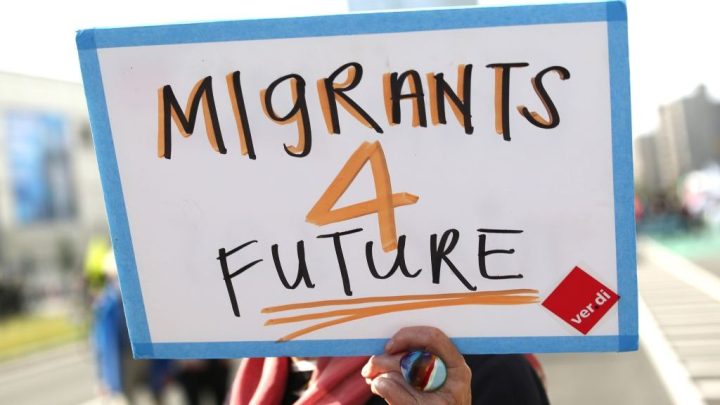
What’s the link between physical and economic mobility?
What’s the link between physical and economic mobility?

Climate change and economic disruption will almost certainly change where we live in the decades to come, but to what extent? And where will we end up? Globalization scholar Parag Khanna sets out to answer these questions and more in his book “MOVE: The Forces Uprooting Us.”
According to Khanna, dense urban populations will shift due to climate change and economic conditions. “In this book, the protagonists are the 4 billion young people,” Khanna told “Marketplace” host Kai Ryssdal. “And because young people don’t have children, they’re economically insecure, they’re seeking stability financially and environmentally. They are going to be prone to move around, and they are going to think less in terms of nationality, and more in terms of their own individual livelihoods.”
To listen to Khanna’s interview, use the media player above.
The following is an excerpt from the book.
In the decade after the subprime mortgage crisis began in 2007, more than 8 million American families were ejected from their foreclosed homes. Many of those worst affected have yet to recover, eking out an existence in “Hoovervilles” or “Trump towns,” as they’ve come to be known. Evictions and homelessness were on the rise even before the pandemic exacerbated Americans’ ability to meet rent and mortgage payments. Homeownership has been falling steadily from the pre–financial crisis peak of 70 percent. Meanwhile, there are nearly 14 million vacant homes nationwide, especially in metro areas. If all of America’s homeless were given free housing, all prisoners released from jail, and immigration restored to 1 million per year — America would still have an excess of vacant housing.
Like countless people all over the world, Americans too are forced into mobility: When firms collapse, financial crises strike, and economies fall into recession, they have to look for new jobs, downsize homes, or move to other cities, states, and counties. For more than a decade, millions of Americans have been shifting from the rust belt and Northeast to the more affordable South and West, taking new jobs in retail, logistics, or tech, leaving overpriced New York, San Francisco, and Los Angeles for Denver, Austin, and Raleigh.
Yet still too few Americans are moving to improve their lot in life. From the 1940s to 1960s, about one-fifth of Americans moved every year as the population grew and expanded westward. More recently, however, domestic migration has stalled. Ironically, this is because underemployment has rendered many youth “stuck in place”: They should move to places where housing, healthcare, and education are cheaper, but they can’t afford to. As today’s hordes of unemployed youth look for work again, they’ll have to get moving to find it.
The American Dream needs to be redefined. Instead of owning a home, the new ideal should be mobility — enabling every American to go wherever they need to go, to where their skills are needed and they can earn more. Research by Harvard’s Raj Chetty shows that over the course of a generation, socioeconomic performance improves once families move to places with greater economic opportunity. Physical mobility, then, is the best pathway to economic mobility.
Excerpted from MOVE: The Forces Uprooting Us by Parag Khanna. Copyright © 2021 by Parag Khanna. Excerpted with permission by Scribner, a division of Simon & Schuster, Inc.
There’s a lot happening in the world. Through it all, Marketplace is here for you.
You rely on Marketplace to break down the world’s events and tell you how it affects you in a fact-based, approachable way. We rely on your financial support to keep making that possible.
Your donation today powers the independent journalism that you rely on. For just $5/month, you can help sustain Marketplace so we can keep reporting on the things that matter to you.


















